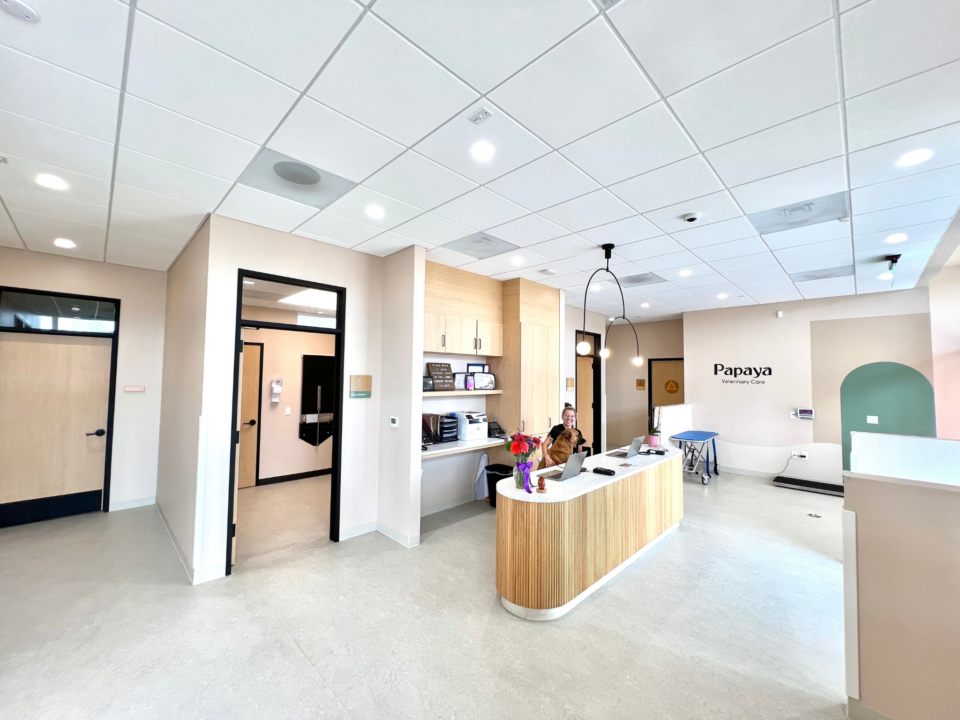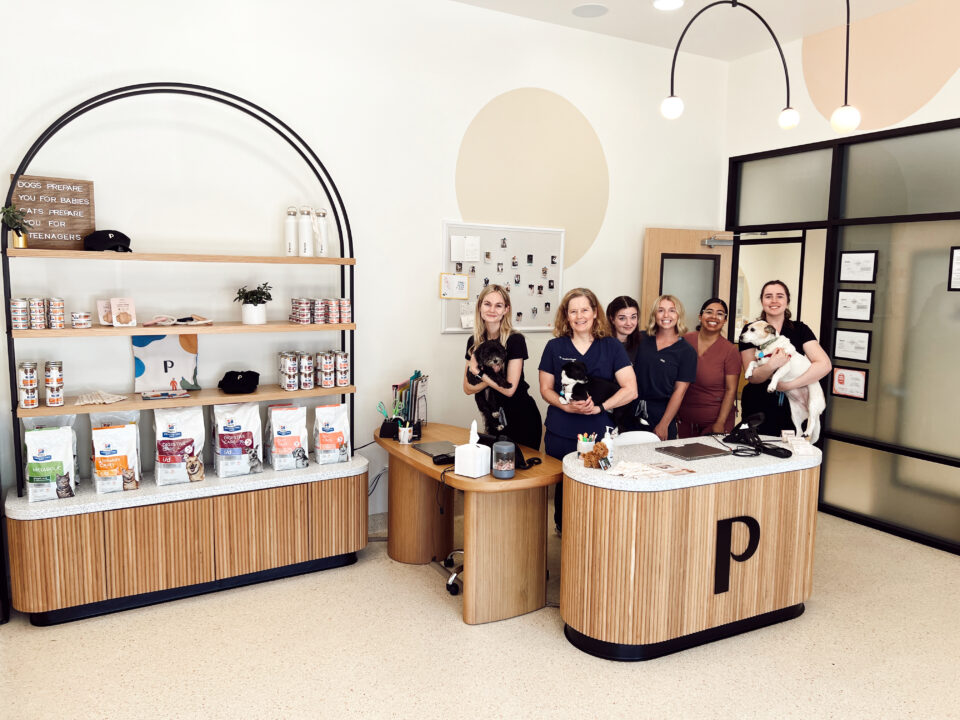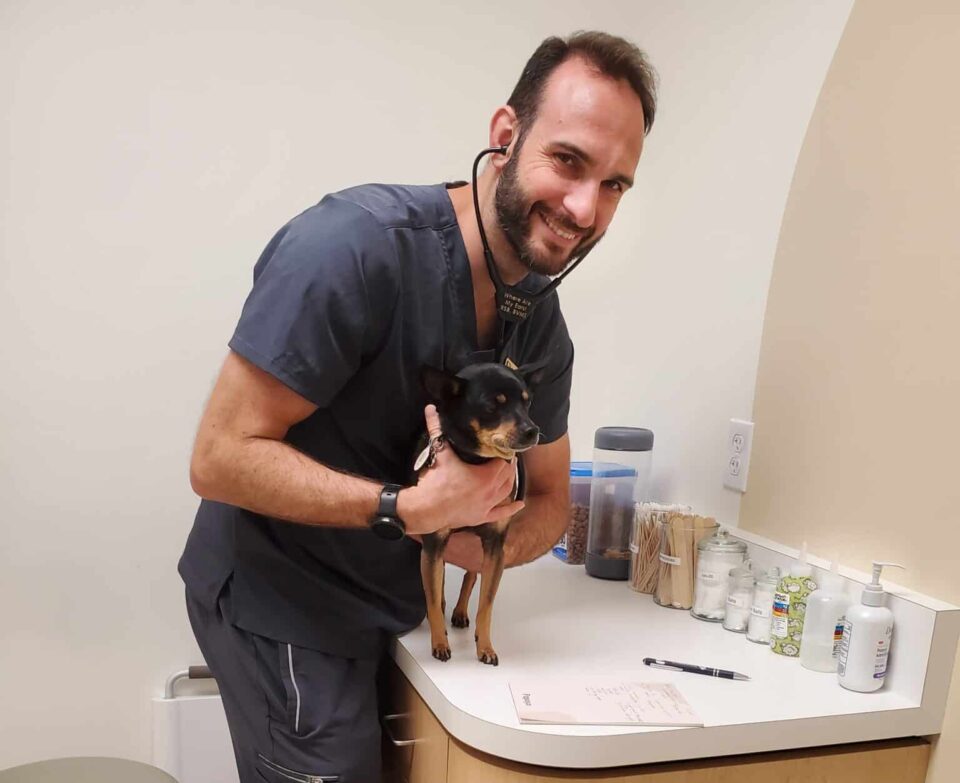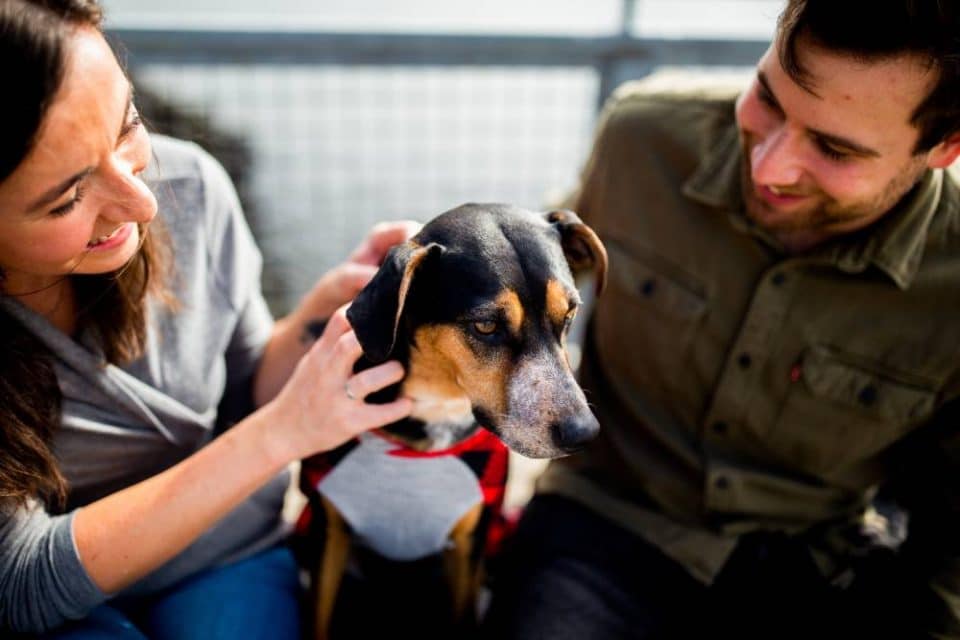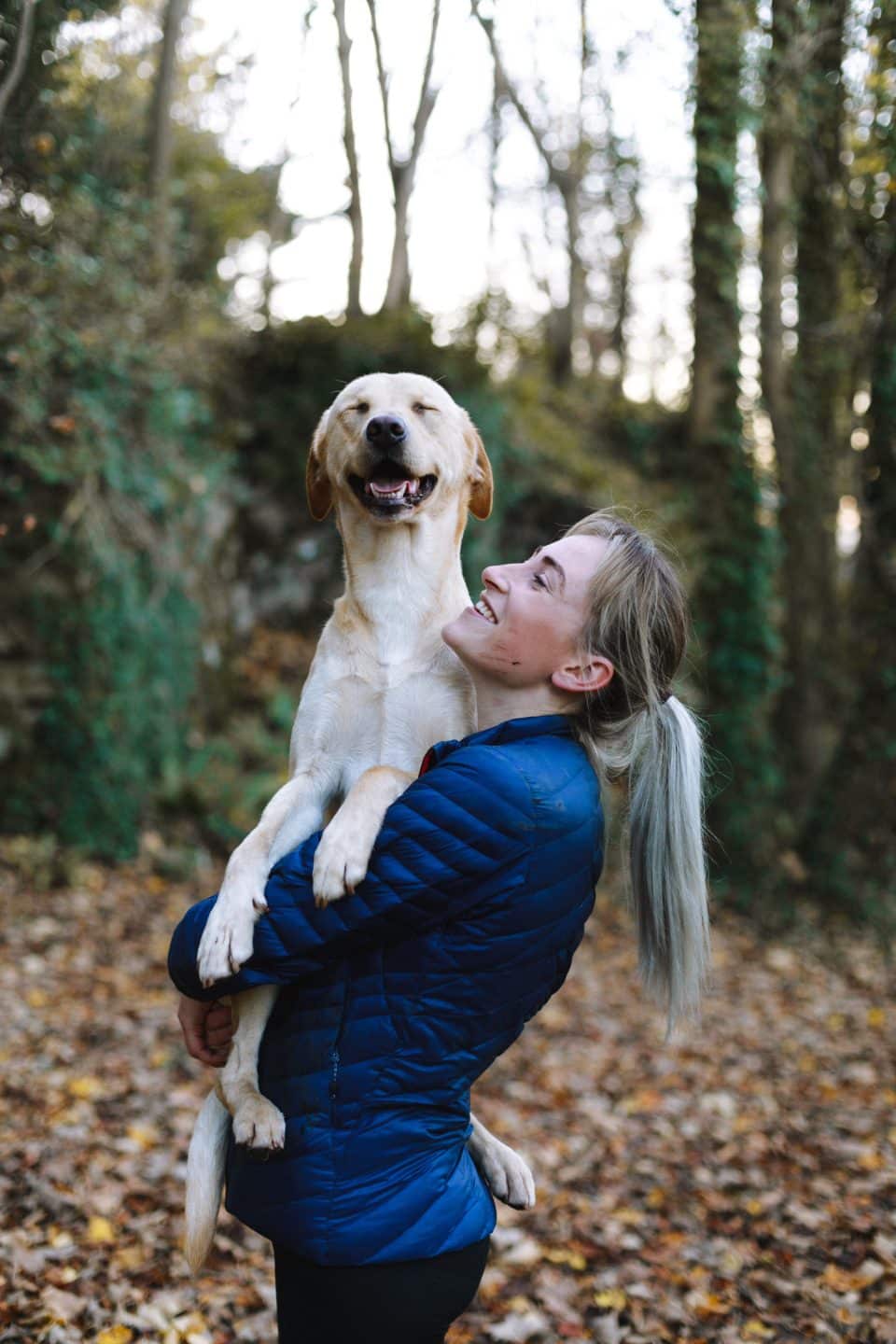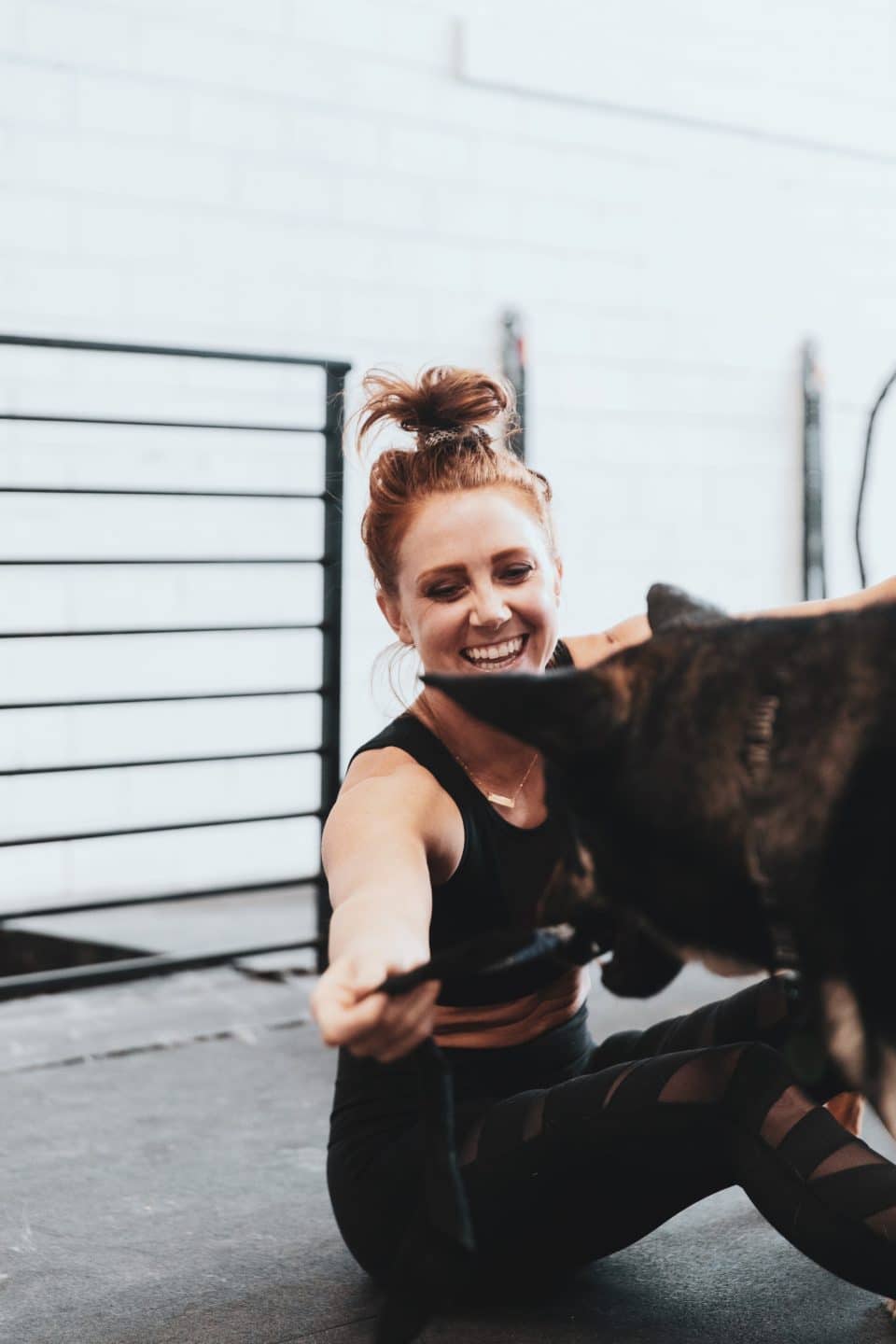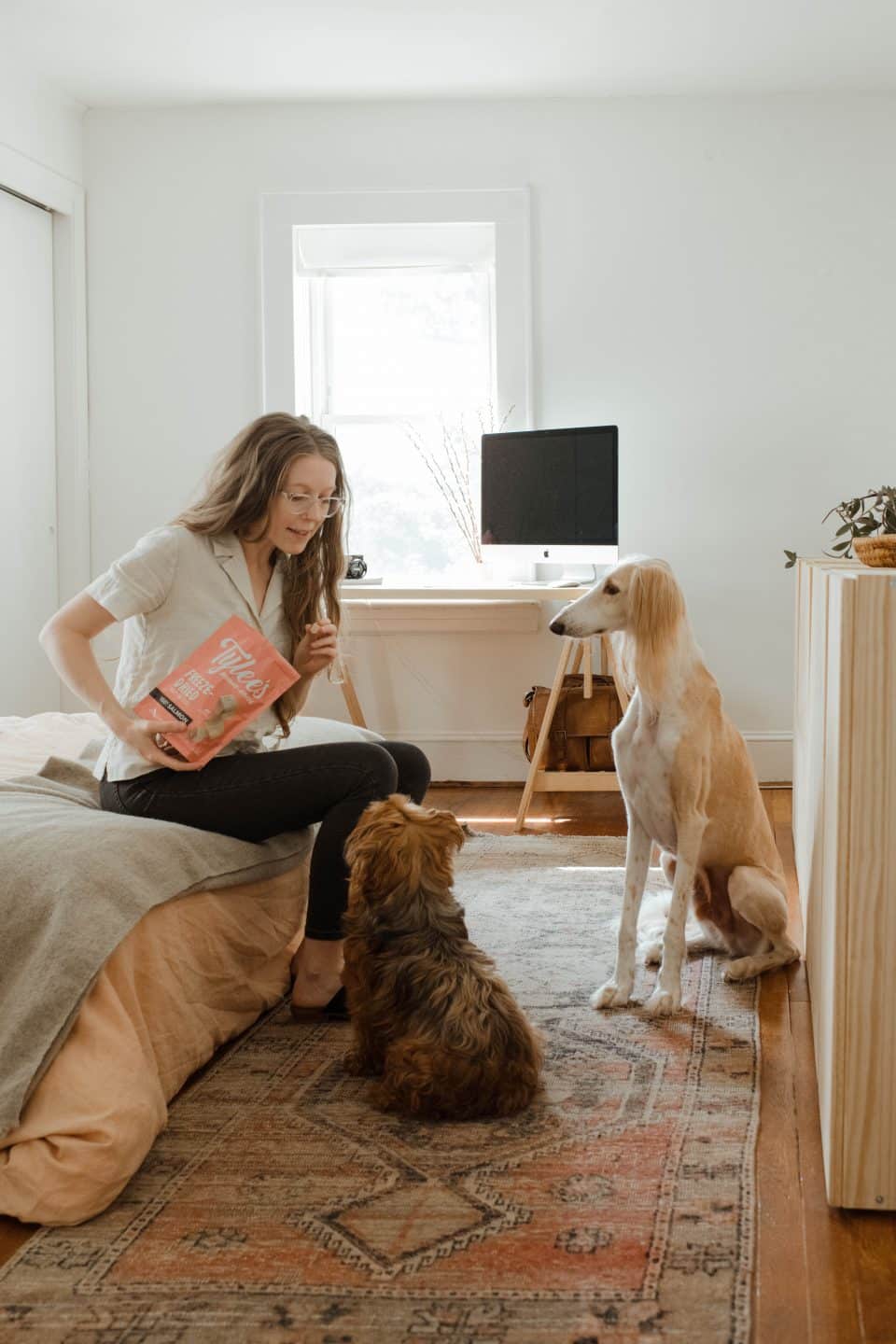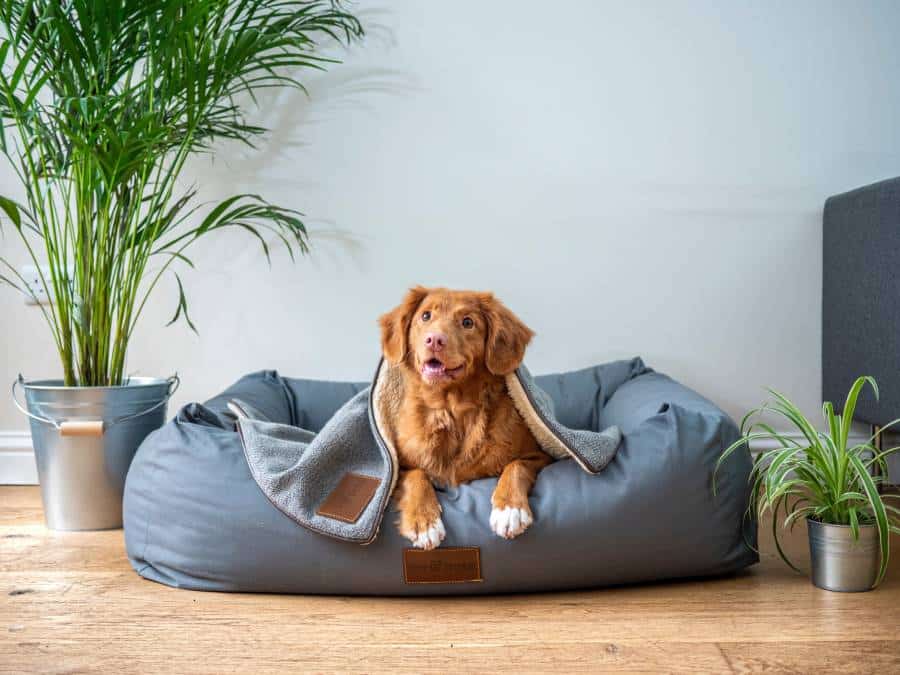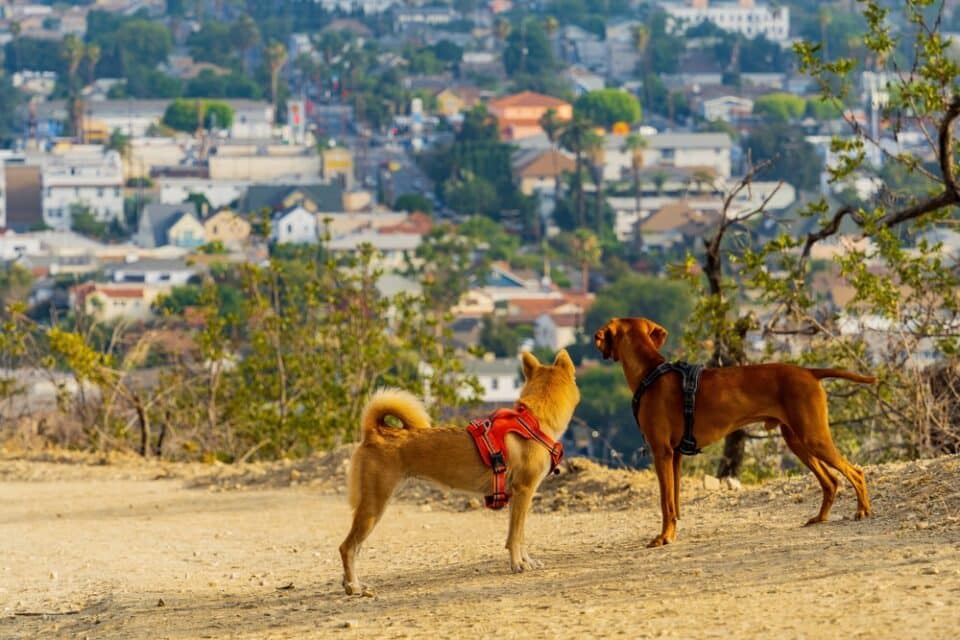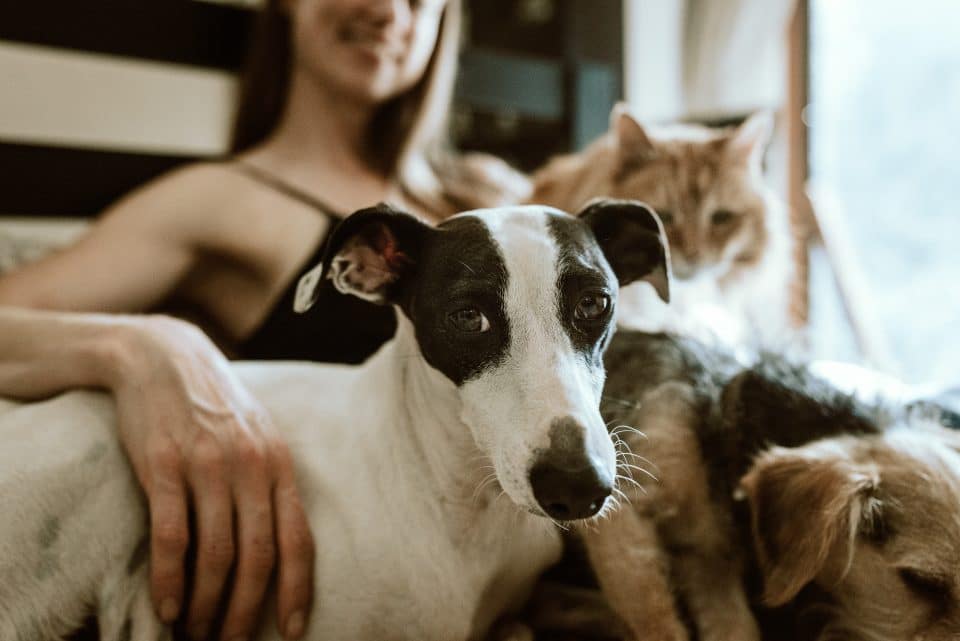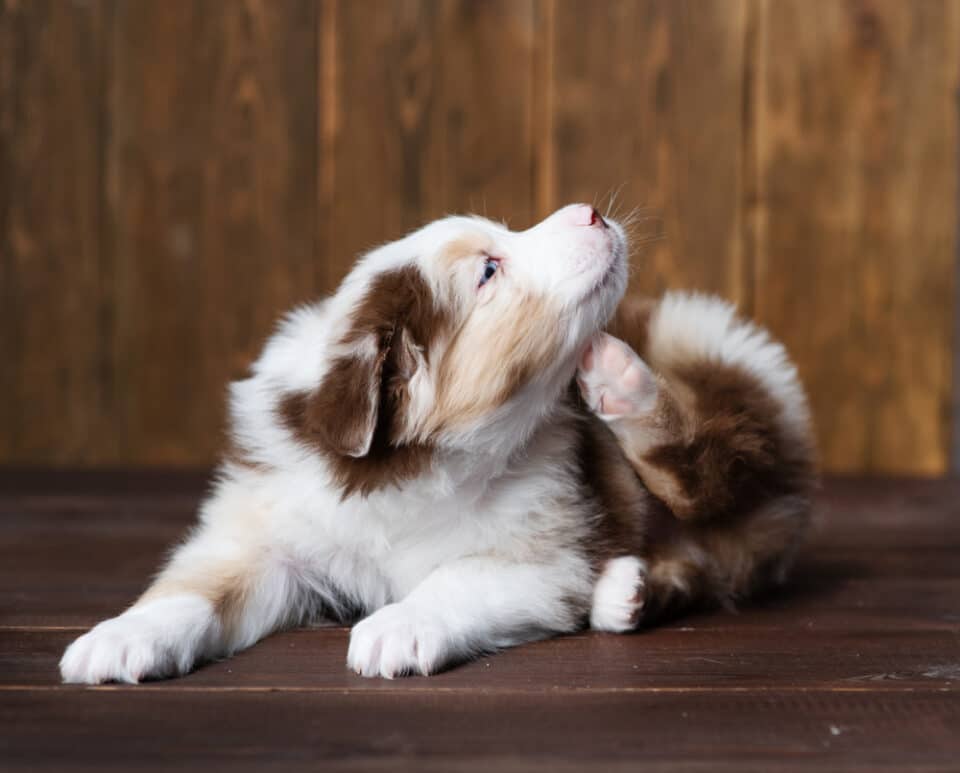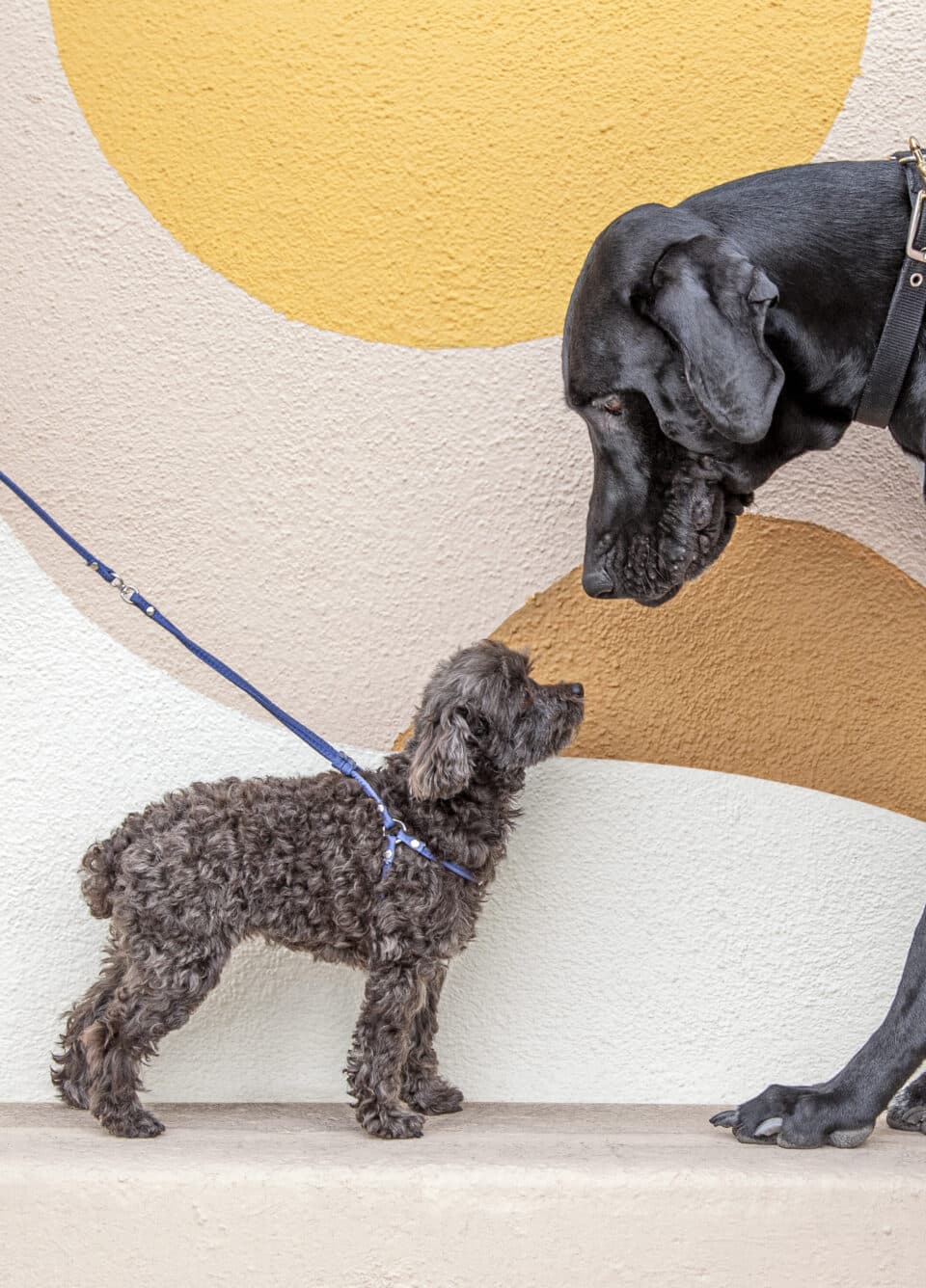Dogs
8 min read
What to Expect as Your Dog Gets Older
Published on Jul 7, 2023
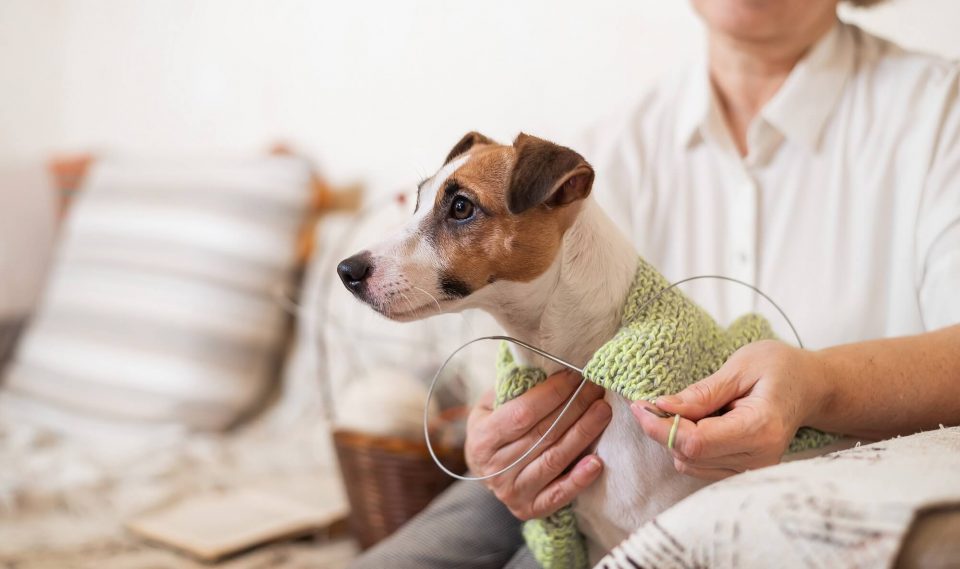
Through all the joy-filled moments between your dog and you—play dates at the park, early morning fetch on the weekends, and snuggling up to watch reruns of Air Bud—the years tend to fly by faster than a greyhound on the chase. You might even be surprised to find your adorable little puppy has suddenly reached their golden years.
When big birthdays come around, your dog may still have the spirit, enthusiasm, and slobbery kisses of a young pup. Yet, the slower gate and grays in their whiskers are tell-tale signs.
Knowing what to expect with an aging dog can ensure they have a comfortable and balanced care plan. Let’s break down what your dog may experience as they age, and how you can provide them optimal care.
Happy Birthday! Does This Make You a Senior?
The big question: How old is my dog in human years? Aging is a gradual and individual process, and with so many different shapes and sizes that dogs can take, it’s impossible to pick a single year in their life that all dogs become seniors. (Hint: that’s also why the 7:1 dog years to human years ratio isn’t so reliable after all.)
Instead, each breed has individual guidelines that mark developmental stages in your dog’s life. You can, however, generalize by size. Dogs become seniors when they reach the last quarter of their life, which means that:
- Small dogs (under 20 pounds), like dachshunds, miniature schnauzers, and shih tzus, are seniors when they are 8-11 years old.
- Medium dogs (between 20 and 50 pounds), like whippets, barbets, and basset hounds, are seniors when they are 8-10 years old.
- Large dogs (between 50 and 100 pounds), like malamutes, coonhounds, and boxers, are seniors when they are 8 or 9 years old.
- Giant dogs (that weigh over 100 pounds), like Great Pyrenees, Newfoundlands, and Scottish deerhounds, are seniors when they are 6 or 7 years old.
If your dog has celebrated one of these birthdays recently, keep reading to learn what to expect with an aging dog.
How Your Dog Shows Their Age
As your dog starts to experience the weight of their long life, they’ll give you signs that indicate these changes (incidentally, they display similar signs of old age in cats). When you recognize these signs for what they are—natural parts of the aging process—you can respond to your dog’s new needs with the same enthusiasm with which they respond to their favorite treat.
In particular, be on the lookout for the following:
- Cloudy eyes
- Lumps and bumps
- Weight gain
- Weight loss
- Stinky breath (more so than usual)
- Indoor accidents
- Confusion and behavioral changes
#1 Cloudy Eyes
Cloudy eyes are a common sign of aging in dogs of all breeds. While this is often a benign process called nuclear sclerosis—which happens gradually—cloudy eyes can be caused by cataracts, which are painful for your dog and make it hard for them to see.
As a pet parent, if your dog is one of the breeds most susceptible to cataracts (like Australian shepherds, bichon friezes, or Boston terriers), be sure to take them to your veterinarian for regular eye exams.
How to Respond to Your Dog’s Cloudy Eyes
If you notice a fog obscuring your friend’s windows to their soul, look out for these other symptoms:
- Squinting
- Swelling
- Redness
- Rubbing
- Bumping into things
- Extra anxiety
These can all be signs of infection or vision loss. Your senior dog will need special attention from their veterinarian if these symptoms appear.
#2 Lumps and Bumps
Certain dog breeds, like labrador retrievers, Doberman pinscher, and cocker spaniels, are more prone to fatty lipomas (aka lumps and bumps). That said, lipomas can grow on any dog.
These bumps below your dog’s skin are quite common, especially as your dog gets older. You might notice new lumps, sometimes squishy and sometimes more firm, while your dog is soaking up your attention in the form of a belly rub (lipomas are often located on the chest and abdomen).
Because your dog can develop lipoma anywhere on their body, it’s important that your belly rubs extend well beyond the abdomen and cover head rubs, neck scratches, butt pats, and full body massages—this message was endorsed by dogs the world over.
How to Respond to New Bumps on Your Dog’s Body
While fatty lipomas are typically benign, if they get too large, they can become painful. Lumps and bumps may also signal malignant tumors, which are dangerous.
When new bumps appear on your dog, be sure to let your veterinarian know. They can test for malignancy, and recommend a strategy for removal if the bump is getting too big.
#3 Weight Gain
With age, your dog’s metabolism will likely start to slow down. Over time, they’ll also become less agile, burning fewer calories when they chase the ball or take you on long walks. And many of us tend to spoil our companions in their old age, passing them food from our dinner plate or doling out extra treats just for being such a good friend (guilty as charged).
But weight gain can be hard on your dog. Extra pounds add stress to your dog’s aging joints, and can make your dog’s organs have a harder time functioning.
How to Respond to Your Dog’s Weight Gain
If your older dog is getting a little chunky, consider making these changes to their diet and lifestyle:
Feed your dog more protein. Protein keeps your pup lean, gives their immune system a boost, and helps their nervous system stay in shape.
Look for food with fewer calories. While calories aren’t bad for healthy dogs, overweight dogs should eat fewer calories.
Try low-impact exercise, like walking on grass, dirt, or sand. Swimming is an excellent exercise option for dogs that enjoy the water—just remember the life vest.
#4 Weight Loss
On the other paw, your aging dog might lose weight as they get older. Your older dog could be losing weight for a number of reasons, including:
- A loss of appetite
- Less lean muscle mass
- An inability to absorb or digest their dog food
Slight, gradual weight loss in senior dogs—and especially in geriatric dogs—is expected. But if your aging dog is shedding pounds fast, that’s cause for concern.
How to Respond to Your Dog’s Weight Loss
Weight loss can be a symptom of an array of illnesses and issues that are more common to older dogs. That’s why it’s important to take your pup to their veterinarian if they lose 10% or more of their body weight within a year. Your dog may also have other symptoms; take note of them to share with their veterinarian. This will help the veterinarian determine the underlying cause of your dog’s weight loss.
#5 Stinky Breath
Your dog’s kisses are a great indicator of their health (not just their dental health issues), no matter their age. And while roses aren’t the first thing you’d compare your dog’s breath to, you shouldn’t be doubled-over and plugging your nose after one whiff. If you’re avoiding your dog’s mouth, this can be a sign of dental issues—look it’s not you… it’s your breath.
Bad breath is more common in older dogs, as their immune systems slow down, and they have a harder time keeping infections at bay.
How to Respond to Your Dog’s Bad Breath
Regular brushing and fresh veggies, like carrots, can help your dog’s immune system fight dental infections and gum diseases. But if your dog’s bad breath persists, check in with your veterinarian; it could be a sign of kidney or liver infections in worst-case scenarios.
#6 More Indoor Accidents
What could be more embarrassing for your dog than forgetting their housetraining? Incontinence (or your dog’s inability to “hold it”) can come with old age for several reasons, including:
- Less bladder control
- UTIs
- Kidney disease
- Tummy problems, like inflammatory bowel disease
- Problems with their prostate
- A hernia that pushes against their bladder
- Problems with the spine, especially for german shepherds
- Arthritis and joint pain
- Confusion and cognitive dysfunction
How to Respond to Your Dog’s Incontinence
Those wet spots in the dog bed and smelly piles in the kitchen aren’t signs of a rebellious mid-life crisis, so take note as an important health indicator. You should check in with your veterinarian as soon as you notice them. If your dog is experiencing any other symptoms, like loss of appetite or lethargy, communicate this as well.
Your dog will appreciate some lifestyle changes that support their new need to “go,” too.
Cover their bed with waterproof material or use absorbent bedding that’s designed for incontinent dogs.
Install a doggy door so they can let themselves out, or put down puppy pads around the house or apartment if you don’t have a yard.
Walk your old dog more frequently, to give them more opportunities to get it all out when they’re not indoors.
#7 Confusion and Behavioral Changes
Your dog’s attitude might change as they get older. They may go from goofy to grumpy due to joint pain, or from enthusiastic to sleepy from the natural slowing down of their metabolism. Or, they might become confused, anxious, or forgetful.
Some of your older dog’s behavior changes are natural signs of aging, like needing more sleep. Some of them are reactions to other age-related changes, like joint pain or vision loss. Some behavior changes signal bigger cognitive issues, like canine cognitive dysfunction syndrome.
Your dog and you can get ahead of cognitive decline by staying engaged and mentally stimulated. Your dog is never too old to learn new tricks and games that keep their mind sharp.
How to Respond to Your Dog’s Changing Behavior
If your dog’s personality is changing significantly, it’s time for a visit to their veterinarian. The veterinarian can rule out more severe cognitive reasons for their behavior change, and suggest treatments for the root causes of your dog’s new moods.
Your Dog Can Walk Confidently Into Their Golden Years with Papaya Pet Care
Wondering how to care for a senior dog? At Papaya, we’re here for your dog and you from puppyhood to old age. Regardless of their age, your pet will feel at home and excited to see their veterinarian.
When your dog shows signs of old age, seamlessly book an appointment. We make scheduling easy, with convenient availability after normal working hours. And our waiting room is the height of luxury for dogs of all ages—but your dog and you won’t spend too long there before seeing their friendly and professional veterinarian.
We can’t wait to meet your dog and you. Make an appointment today.
Sources:
- AAHA. 2019 AAHA Canine Life Stage Guidelines. https://www.aaha.org/globalassets/02-guidelines/canine-life-stage-2019/2019-aaha-canine-life-stage-guidelines-final.pdf
- Dutch. What Does It Mean When a Dog’s Eyes Are Cloudy? https://www.dutch.com/blogs/dogs/dogs-eyes-cloudy
- PetMD. Lipoma in Dogs. https://www.petmd.com/dog/conditions/skin/c_multi_lipoma
- Senior Tail Waggers. Senior Dog Nutrition: An Owner’s Guide. https://seniortailwaggers.com/senior-dog-nutrition/
- Senior Tail Waggers. All About Weight Gain In Older Dogs. https://seniortailwaggers.com/weight-gain-in-older-dogs/
- Senior Tail Waggers. Weight Loss In Old Dogs: Our Veterinarians Share What To Do. https://seniortailwaggers.com/weight-loss-in-older-dogs/
- American Kennel Club. Physical and Mental Signs that Your Dog is Aging. https://www.akc.org/expert-advice/health/physical-mental-signs-dog-aging/
- American Kennel Club. How to Get Rid of Stinky Dog Breath.
https://www.akc.org/expert-advice/health/get-rid-of-stinky-dog-breath/ - PetWise. How to cope with older dog incontinence. https://www.petwise-insurance.com/advice/how-to-cope-with-older-dog-incontinence/

